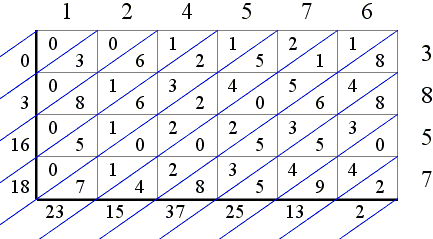

Well, clearly for any $(a,b)$ in the set (which means $a \leq b$ or $b \leq a$), $\pm \text(a,b)$? The minus sign is what's throwing me off in this particular example. Discrete Mathematics: LatticeTopics discussed:1) The definition of Lattice.2) Identifying if the given Hasse Diagram is a Lattice.3) Identifying if the given. (?)Ĭonsider the problem of determining whether or not the relation $a \leq b$ if $a|b$ over the nonzero integers is a lattice. Partially Ordered Set Poset Examples of Poset Examples of not Posets posetRadhe RadheIn this vedio, the concepts of partial order and partially. So, if $a \leq b$, then the greatest lower bound would just be $a$ because every other element $a'$ in the set $\leq a$ would necessarily have to be $\leq a$. Keywords: Atomic poset C(D)-operator Complete lattice.

Because every poset is reflexive by definition, for any pair $a,b$ (assume $a \ne b$), $a\leq a$ and $b \leq b$. I need to show that for every pair $(a,b)$ where $a,b$ in the set, that this pair has a least upper bound and a greatest lower bound in the set. On a very basic level, I'm not understanding the definition of a lattice. I'm stuck because I'm missing some understanding of the concepts on two levels: In fact, a lattice is obtained from a lattice-ordered poset by defining and for any. A lattice is a type of structure that aims to organize certain relationships. There is a natural relationship between lattice-ordered sets and lattices. The greatest lower bound is also called the meet of a and b, and is denoted by a b. The least upper bound is also called the join of a and b, denoted by a b. This will have the same infinite cardinality, while still accepting an embedded copy of $P$, but this larger Boolean algebra, being atomless, is not isomorphic to the earlier one, which is.įor finite cardinalities, however, of course the answer to question 2 is yes, since every finite Boolean algebra is isomorphic to a finite powerset algebra, and so if two of them have the same size (must be $2^n$), then they are isomorphic.I'm studying Judson's text in abstract algebra that asks me to prove or disprove if the set of nonzero integers with the relation: $a \leq b$ if $a|b$ is a lattice. Lattice Theory MathWorld Contributors Insall Lattice-Ordered Set A lattice-ordered set is a poset in which each two-element subset has an infimum, denoted, and a supremum, denoted. A partially ordered set (A, ) is called a lattice if every pair of elements a and b in L has both a least upper bound (LUB) and a greatest lower bound (GLB). Simply view every atom as sitting atop a copy of the countable atomless algebra, and then generate the corresponding Boolean algebra. The particular Boolean algebra that we had used was atomic, but we may find a larger Boolean algebra of the same infinite cardinality by embedding that Boolean algebra inside an atomless algebra. Meanwhile, the answer to question 2 is no for infinite cardinalities. isconstructiblebydoublings() Return True if the lattice is constructible by doublings from the one-element lattice. As a special case, minor posets of distributive lattices avoiding this forbidden minor are isomorphic to the face.

issubdirectlyreducible() Return True if the lattice is a sublattice of the product of smaller lattices. This idea works for any poset, whether finite or infinite. Return True if all congruences of lattice are determined by any of the congruence blocks. It is clear that $q\leq p\iff S_q\subset S_p$, and so this maps $P$ into the powerset algebra, which is a Boolean algebra. One can map every condition $p$ in the partial order to the lower cone, the set $S_p=\$ of conditions below $p$. As Sam mentioned in the comments, the answer to question 1 is yes.


 0 kommentar(er)
0 kommentar(er)
